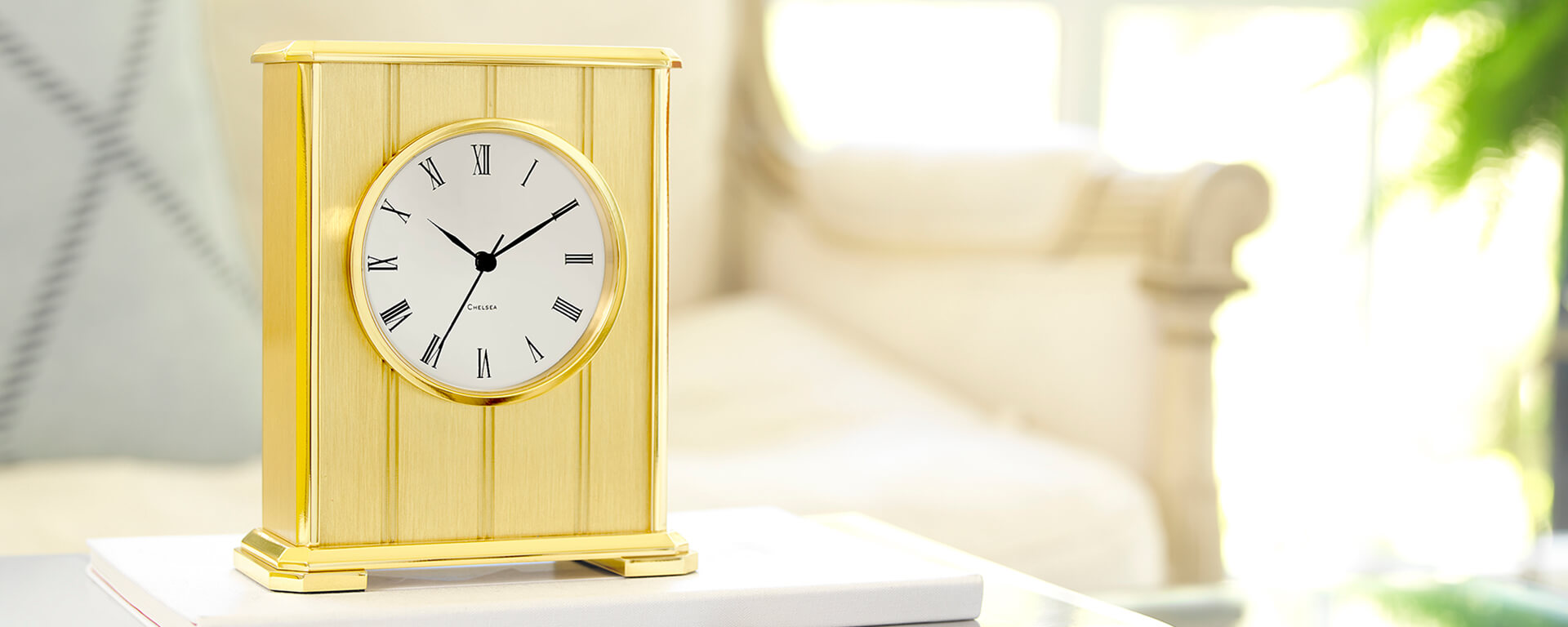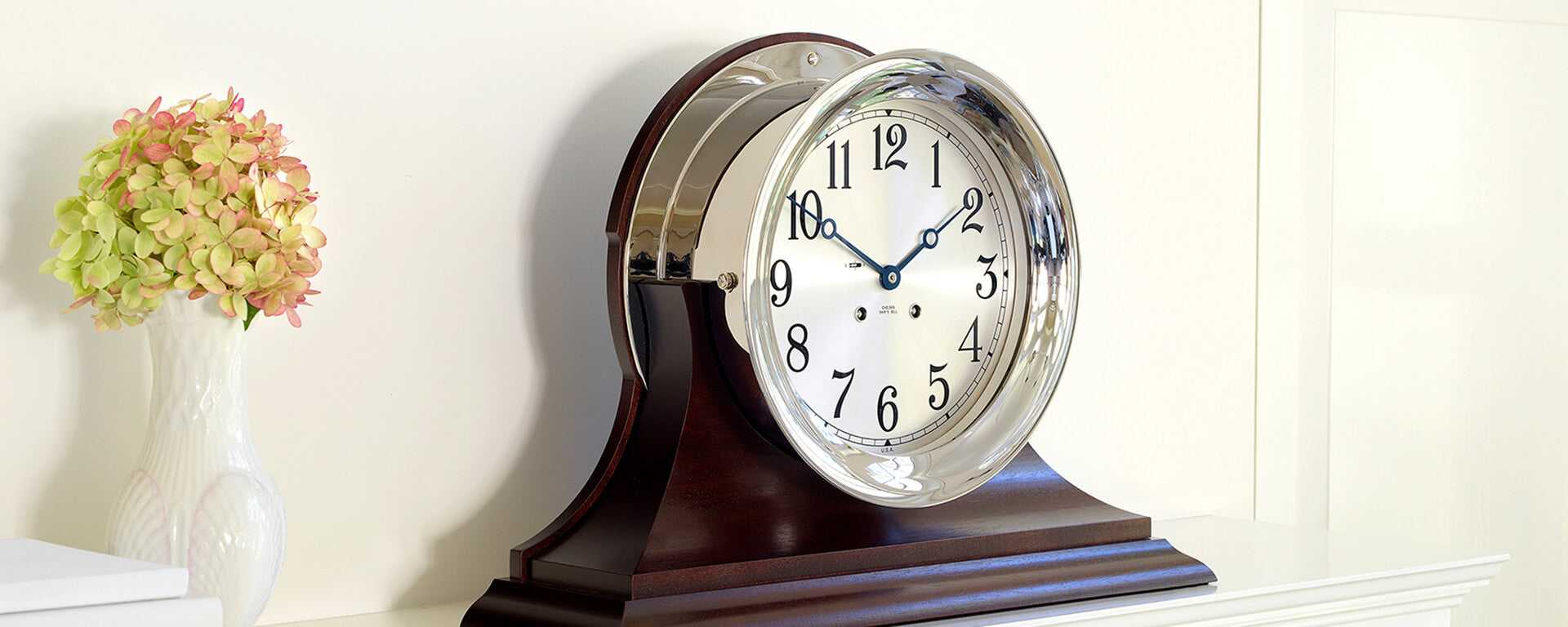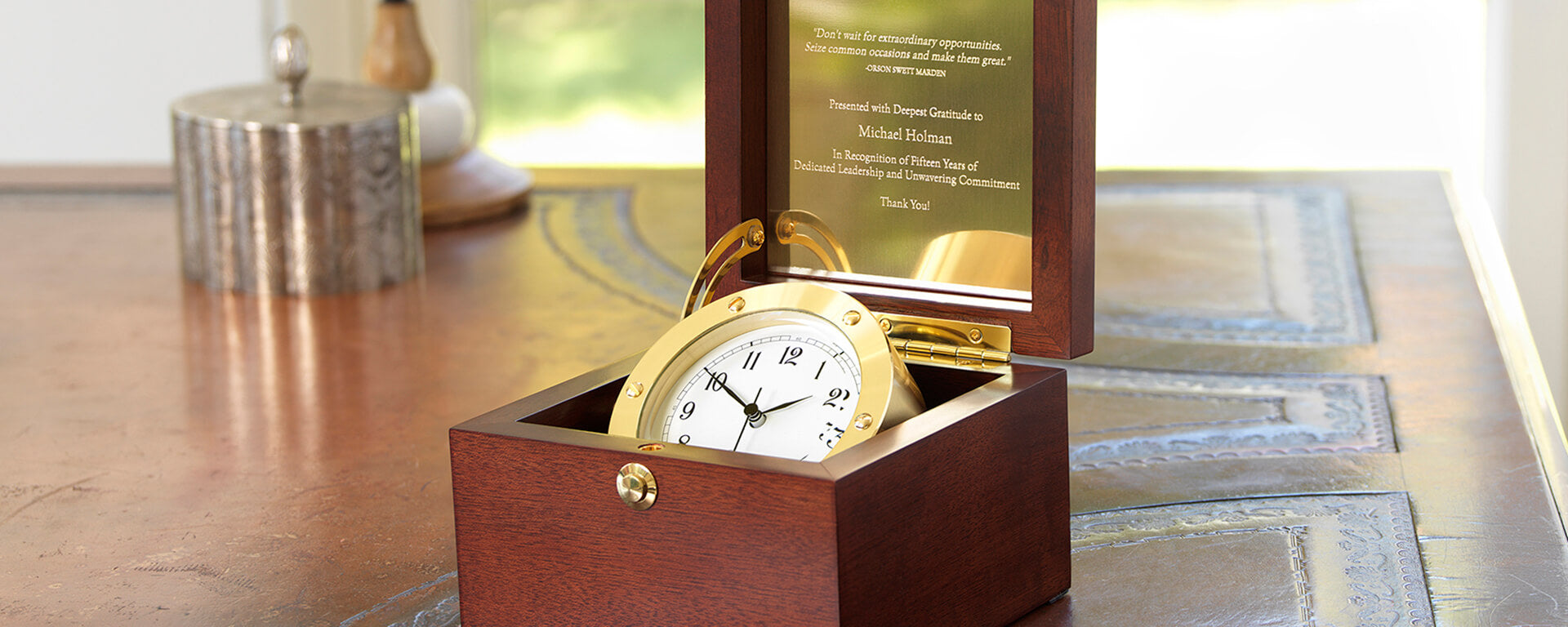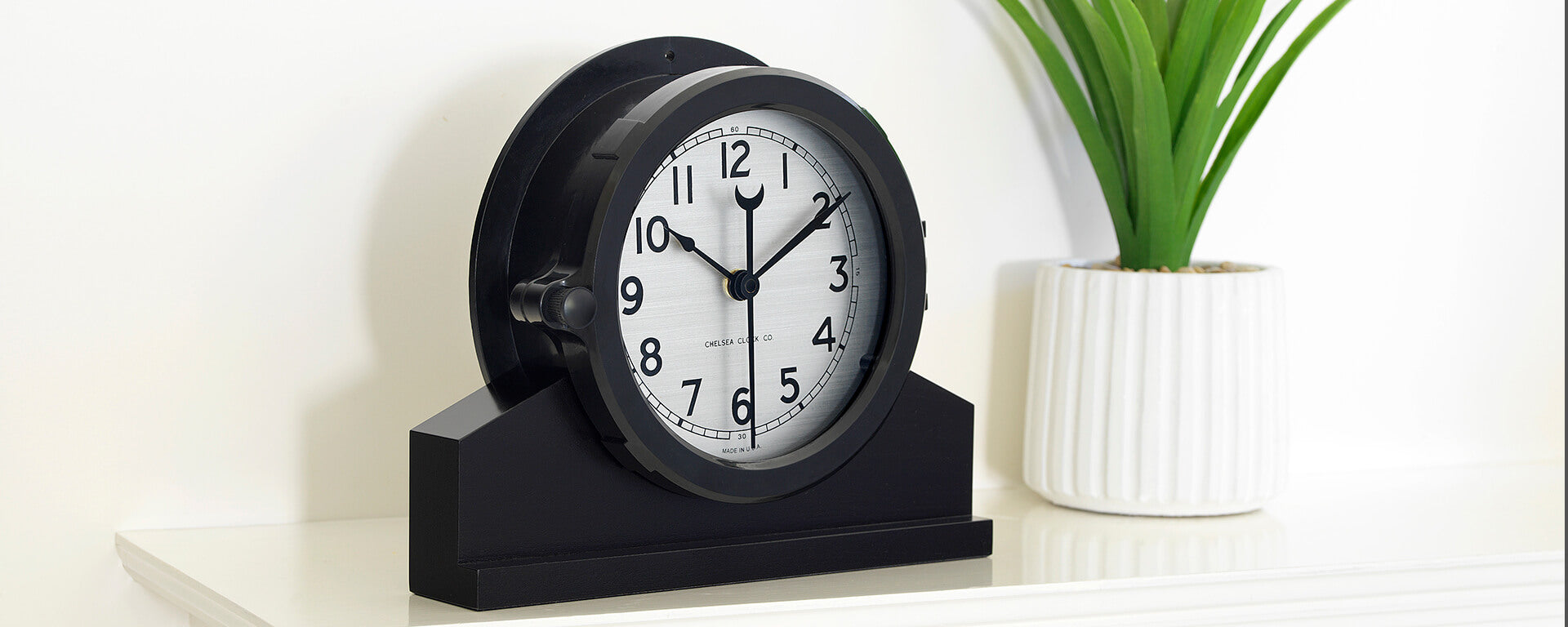How To Re-Silver A Clock Dial
 After
After
 Before
Before
When you come across some antique or vintage clocks, you may notice that the original solid brass faces were engraved, then hand silvered. While of a cosmetic nature (and not mechanical), the overall condition of a clock dial can significantly affect its readability, which is why you should have your clock’s dial re-silvered if it begins to lose its original luster.
The earliest dials Chelsea Clock — in business since 1897 — fashioned were silvered, then hand-painted. Over the years, we experimented with different materials like copper-plated lead and cast copper before finally settling on the solid brass dial we employ today. Depending on the original application used to mold your dial, we can determine if it is a candidate for restoration or not.
At its core, the process of re-silvering clock dials essentially means restoring their original finish and luster.
The Dial Restoration Process
Before the restoration process can begin, the dial is photographed to ensure that all of the vital information regarding its original visual appearance is retained. Next, we carefully remove the escutcheons and raised numerals (when applicable), then refill the etched minute track, the numbers, and any logos our repair specialists encounter, with black enamel. The dial is then placed on a turntable, spun and polished with a wet sanding technique to repair any fine scratches or imperfections, as well as to prep the clock for silvering
How to Restore a Brass and Silvered Clock Dial
Before the restoration process can begin, the dial is photographed to ensure that all of the vital information regarding its original visual appearance is retained. Next, we carefully remove the escutcheons and raised numerals (when applicable), then refill the etched minute track, the numbers, and any logos our repair specialists encounter, with black enamel. The dial is then placed on a turntable, spun and polished with a wet sanding technique to repair any fine scratches or imperfections, as well as to prep the clock for silvering.
Polishing a Clock Dial
How do you clean an antique silvered clock dial? We hear that question often. Once the clock’s dial has been restored and re-silvered, we apply a lacquer coating to protect and preserve the finish. If the original dial was hand-painted, the first step is to re-silver it, then paint the minute track, clock numbers and finally the company logo (all before lacquering).
How to Stamp a Name on a Clock Dial
Some dials have the retailer’s name either etched or ink-stamped into the dial. Our gifted craftspeople can replicate ink stamps by using steel plates to transfer the retailer’s name back onto the restored dial. After these refurbishing steps have been completed, we fit brand new escutcheons to the clock to protect the winding holes from key slip-ups.
If you have an older or antique clock in need of restoration, we’d be happy for you to send it our way. A free estimate will be sent to you 7 to 10 days after our factory receives your item for repair.
More questions? Feel free to submit an inquiry or call 800-284-1778 for answers from our knowledgeable team.








